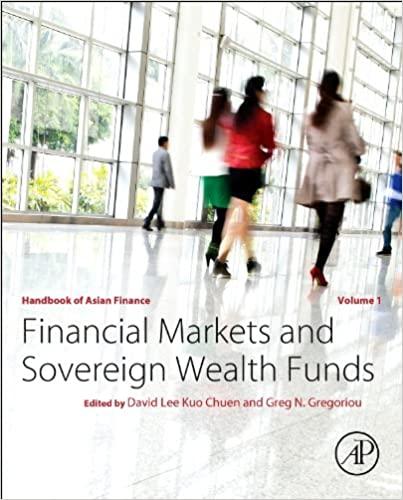Answered step by step
Verified Expert Solution
Question
1 Approved Answer
1. 2. 3. 4. 5. Greta has risk aversion of A=3 when applied to return on wealth over a one-year horizon. She is pondering two
1.





Greta has risk aversion of A=3 when applied to return on wealth over a one-year horizon. She is pondering two portfolios, the S\&P 500 and a hedge fund, as well as a number of one-year strategies. (All rates are annual and continuously compounded.) The S\&P 500 risk premium is estimated at 5% per year, with a standard deviation of 20%. The hedge fund risk premium is estimated at 10% with a standard deviation of 35%. The returns on both of these portfolios in any particular year are uncorrelated with its own returns in other years. They are also uncorrelated with the returns of the other portfolio in other years. The hedge fund claims the correlation coefficient between the annual return on the S\&P 500 and the hedge fund return in the same year is zero, but Greta is not fully convinced by this claim. Calculate Greta's capital allocation using an annual correlation of 0.3 ? (Do not round your intermediate calculations. Round your answers to 2 decimal places.) XYZ Corp. will pay a $2 per share dividend in two months. Its stock price currently is $60 per share. A European call option on XYZ has an exercise price of $55 and 3 -month time to expiration. The risk-free interest rate is 0.5% per month, and the stock's volatility (standard deviation) =7% per month. Find the Black-Scholes value of the American call option. (Hint. Try defining one "period" as a month, rather than as a year, and think about the net-of.dividend value of each share.) (Round your answer to 2 decimal places.) You are attempting to value a put option with an exercise price of $100 and one year to expiration. The underlying stock pays no dividends, its current price is $100, and you believe it has a 50% chance of increasing to $120 and a 50% chance of decreasing to $80. The risk-free rate of interest is 10%. a. What will be the payoff to the put, Pu if the stock goes up? b. What will be the payoff, pd if the stock price falls? c. What is the weighted average value of the pay off? (Do not round intermediate calculations. Round your answer to 3 decimal places.) Greta has risk aversion of A=3 when applied to return on wealth over a one-year horizon. She is pondering two portfollos, the S\&P 500 and a hedge fund, as well as a number of one-year strategies. (All rates are annual and continuously compounded.) The S\&P 500 risk premium is estimated at 5% per year, with a standard deviation of 20%. The hedge fund risk premium is estimated at 10% with a standard deviation of 35%. The returns on both of these portfolios in any particular year are uncorrelated with its own returns in other years. They are also uncorrelated with the returns of the other portfolio in other years. The hedge fund claims the correlation coefficient between the annual return on the S\&P 500 and the hedge fund return in the same year is zero, but Greta is not fully convinced by this claim. Compute the estimated annual risk premiums, standard deviations, and Sharpe ratios for the two portfolios. (Do not round your intermediate calculations. Round "Sharpe ratios" to 4 decimal places and other answers to 2 decimal places.) Suppose that JPMorgan Chase sells call options on $1.25 million worth of a stock portfolio with beta =1.5. The option delta is 0.8. It wishes to hedge its resultant exposure to a market advance by buying a market-index portfollo. Suppose it use market index puts to hedge its exposure. The index at current prices represents $2,000 worth of stock. a. How many dollars' worth of the market-index portfolio should it purchase? b. What is the delta of a put option? (Round your answer to 1 decimal place. Negative amount should be indicated by a minus sign.) b. What is the delta of a put option? (Round your answer to 1 decimal place. Negative amount should be indicated by a minus sign Answer is complete and correct. c. Complete the following: (Round your answer to 1 decimal place. Negative amount should be indicated by a minus sign.) 
2.

3.

4.

5.


Step by Step Solution
There are 3 Steps involved in it
Step: 1

Get Instant Access to Expert-Tailored Solutions
See step-by-step solutions with expert insights and AI powered tools for academic success
Step: 2

Step: 3

Ace Your Homework with AI
Get the answers you need in no time with our AI-driven, step-by-step assistance
Get Started


